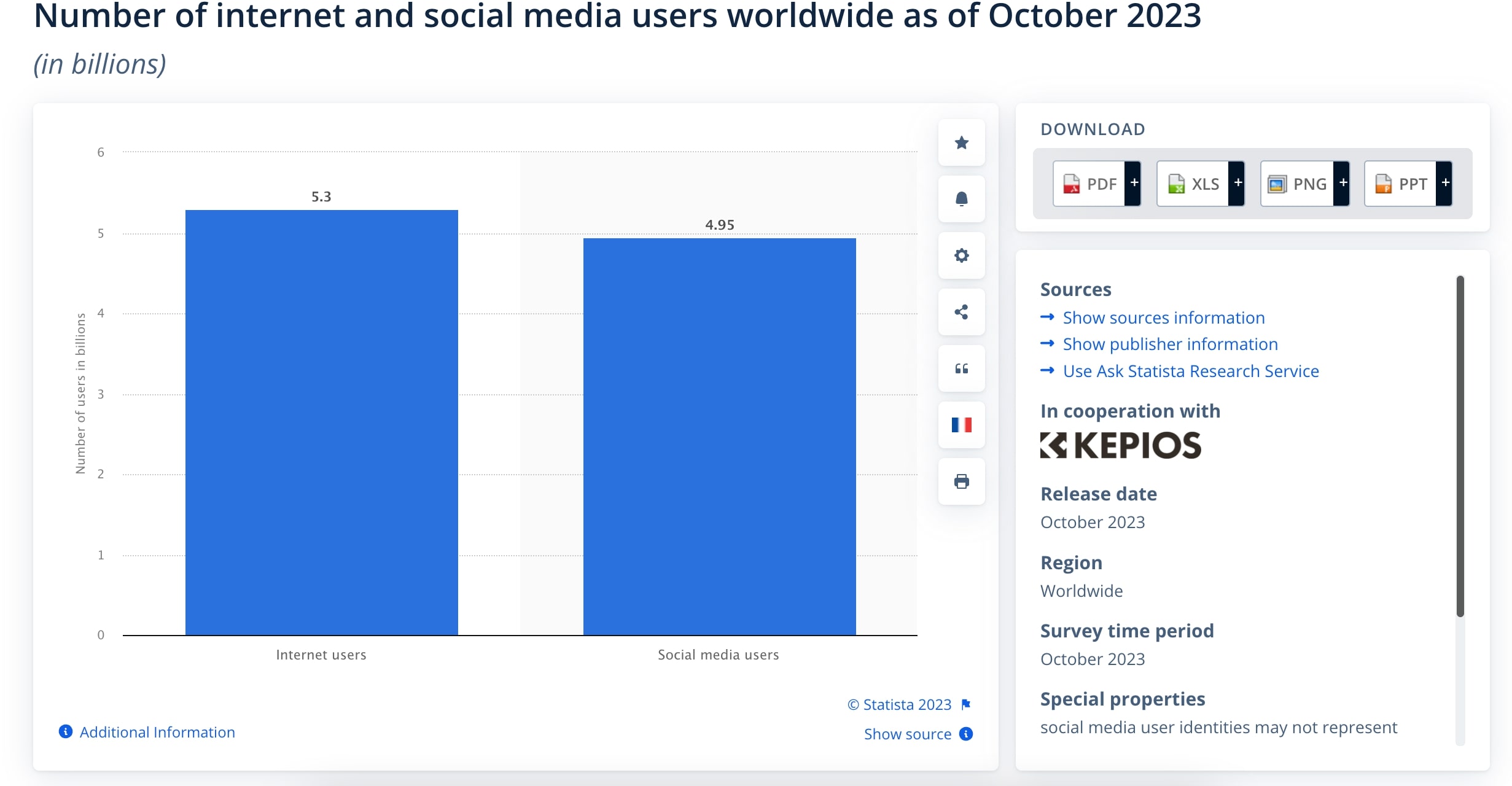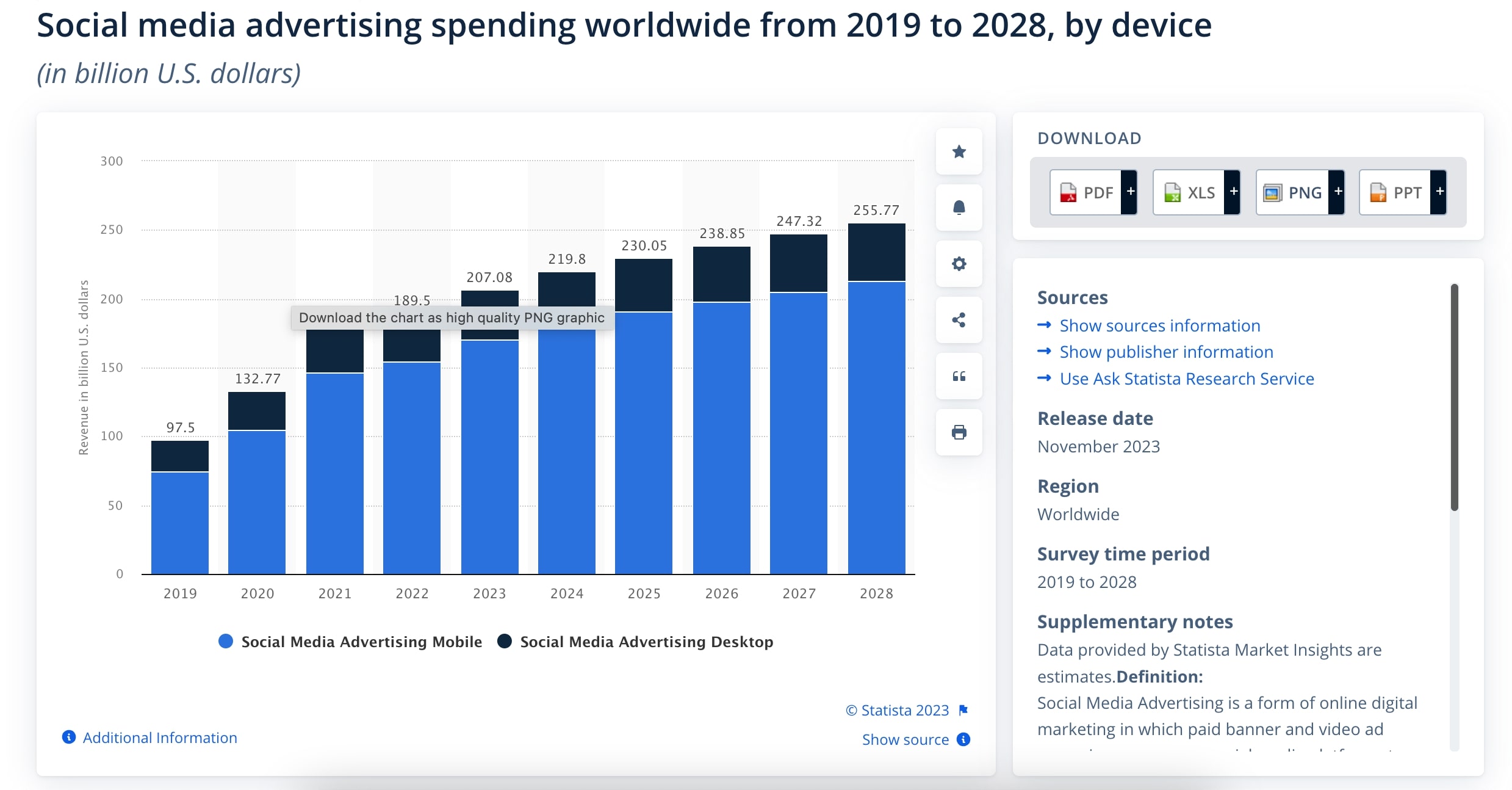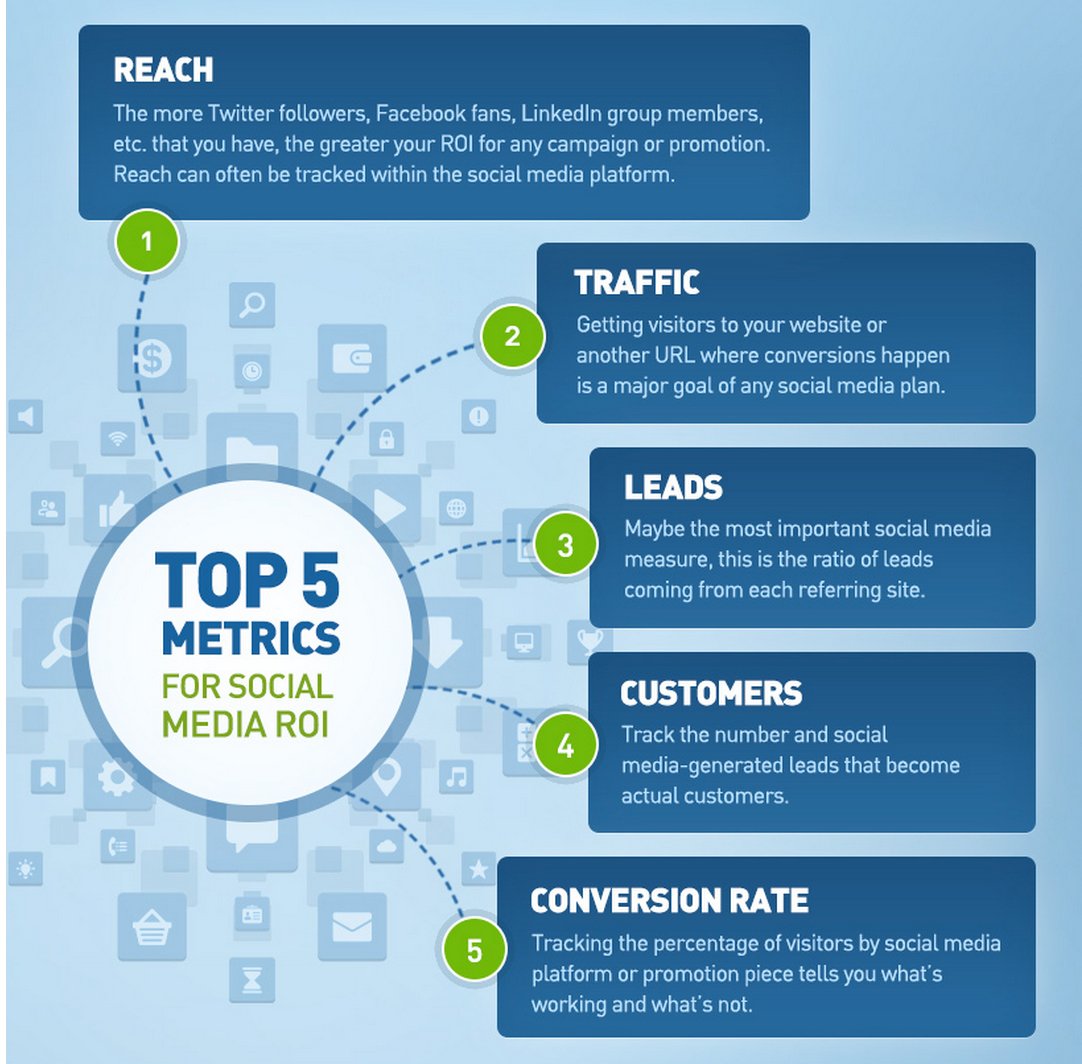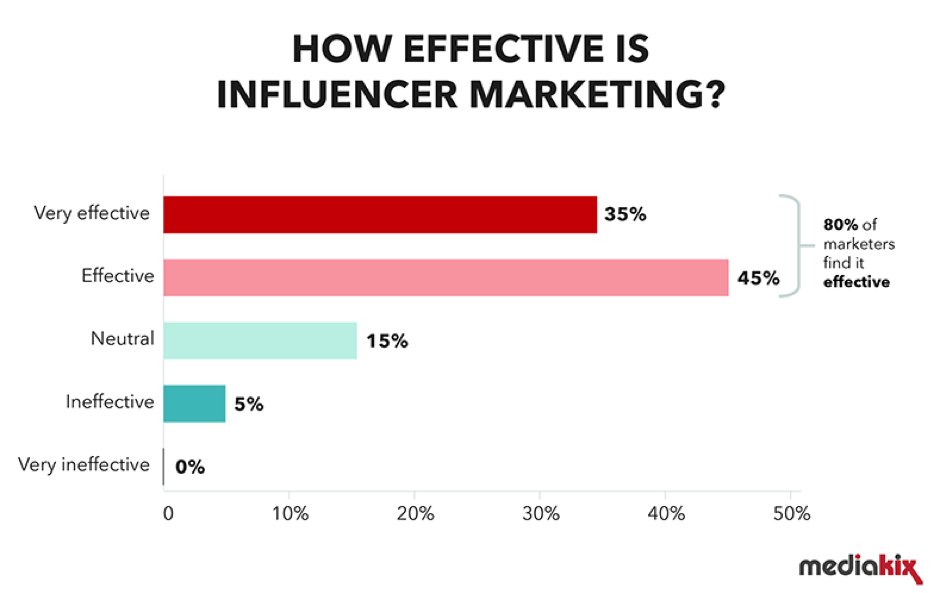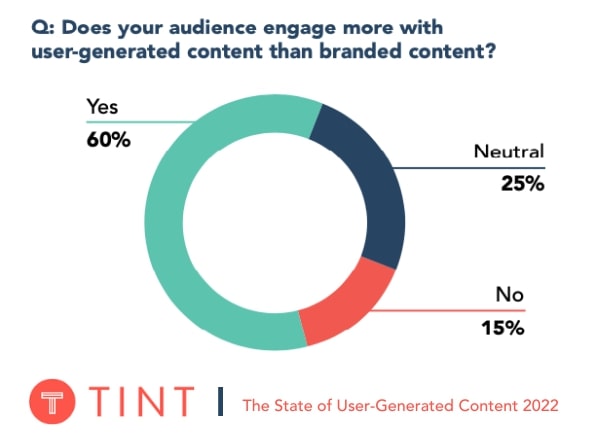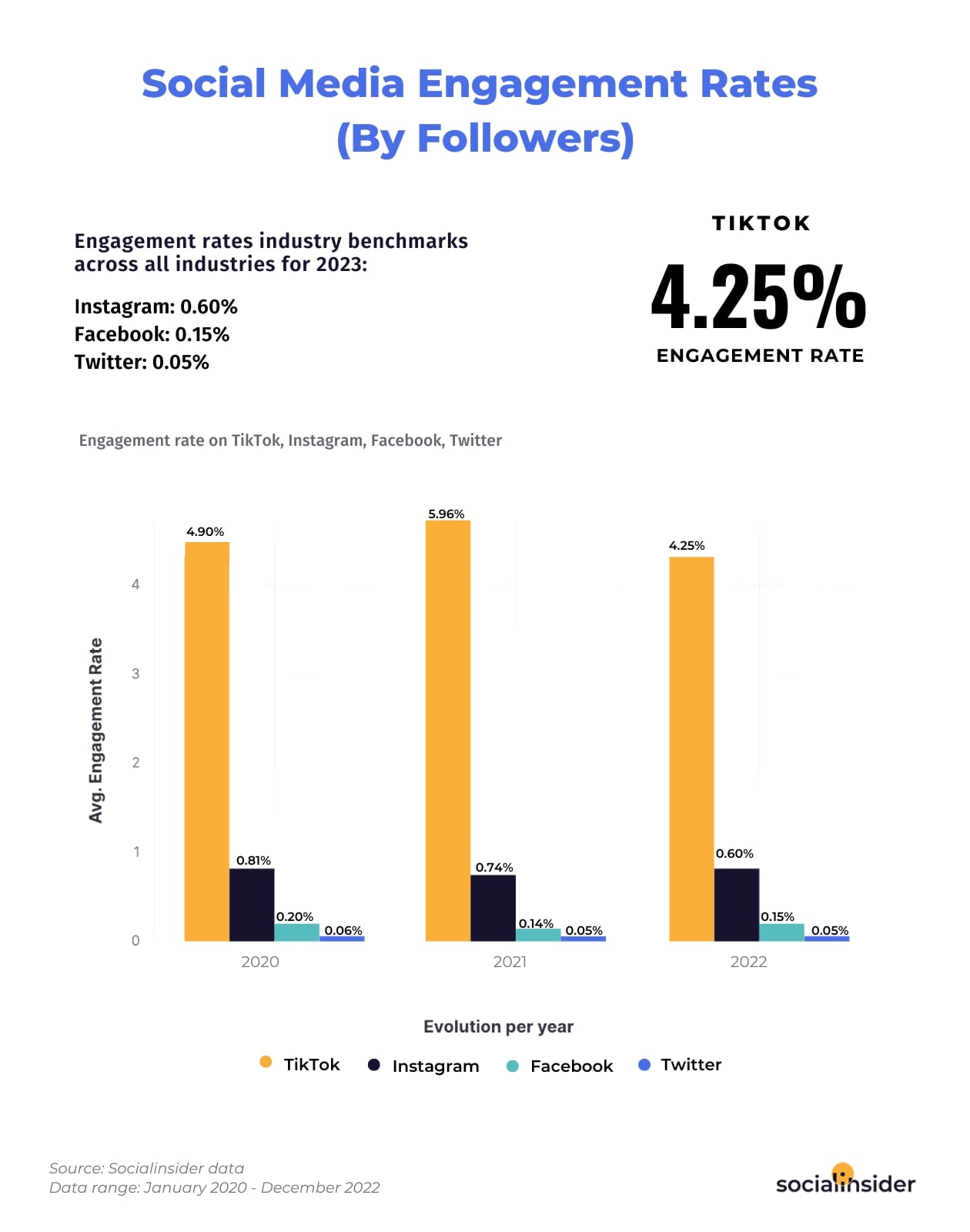The Ultimate Social Media Management Checklist
Be prepared for our ultimate social media marketing checklist. With daily, weekly, and monthly to-do lists, we compiled everything you need to crush your goals.
Updated November 7, 2024.

From afar, social media marketing seems easy. Publish some posts, like some others, and spend the rest of your time mindlessly scrolling up and down on social media platforms. That's about it, right?
Wrong.
Social media management is incredibly complex, time-consuming, and bears a massive responsibility for your business. More than 4.95 billion people (almost the entirety of all internet users) are on social media. To meet your audience halfway these days, your business should do more than just "check the box" and have a vague online presence, or publish a few posts on Facebook. It should be active, relevant, attention-grabbing, smart about collaborations, invested in paid ads, and constantly optimizing content.
How do you do that?
Consistency and organization is key. That is precisely why we've put together a list of everything social media management implies, both at the high level and into the nitty-gritty.
Keep reading to find out more.
(Source)
Why is a social media management checklist important?
Checklists may not magically do your work for you (we wish!), but they can surely guide you through the myriad of tasks a social media manager needs to handle. If you want to stay on top of everything and have a clear overview of your social media management strategy, you need to consider a social media checklist.
The main tasks of a social media manager
Social media marketing used to be easier. You'd find some industry-relevant links, bring them together with some blog posts on your website, schedule everything on a social media platform, and then work on building the account, engaging with others, and so on.
Meanwhile, social channels have gotten more complex and a large part of both organic and paid marketing efforts heavily rely on social media channels. So, seemingly overnight, a social media manager's job got...way harder.
The essence is the same: creating engaging content that resonates with your audience. However, social media management is now a multi-layered task that requires more time and effort than ever before.
(Source)
The basic tasks of a social manager include:
Sharing content
One of the core responsibilities of a social media manager is to share content that is relevant, beneficial, and engaging for the audience. This involves curating, creating, and distributing different types of content across various social media platforms to foster brand visibility, encourage audience interaction, and drive traffic to the business's website or blog.
Doing this requires a deep understanding of the brand's audience, preferences, and social media algorithms to ensure the content reaches the desired demographic.
Engaging with followers on relevant channels
Engaging with followers and relevant channels is another crucial task for a social media manager.
It involves responding to comments, messages, and reviews, participating in discussions, and building a vibrant online community. This personal interaction helps to humanize the brand, deepen customer relationships, and foster brand loyalty.
Monitoring brand presence
Monitoring brand presence is crucial in maintaining the brand's image and reputation online. It involves tracking mentions of the brand across all social platforms, responding to negative feedback diplomatically, and leveraging positive feedback. This allows the social media manager to assess public sentiment, identify potential crises, and discover opportunities for engagement and growth.
Reporting, analyzing, and improving
A social media manager's duties are multi-faceted and increasingly complex. They must share relevant and engaging content, interact with followers and other channels, monitor the brand's social media presence, and perform regular reporting, analysis, and improvements. These tasks require a deep understanding of the audience, the ability to manage relationships, and the skills to analyze and respond to brand sentiment across all social platforms.
Running ads
Running ads is an integral part of a social media manager's role. It involves designing and executing targeted advertising campaigns across various social media platforms. These campaigns are tailored to reach a specific demographic, increase brand awareness, drive traffic, and ultimately, boost sales. This requires a thorough understanding of ad management tools, audience targeting, budgeting, and analyzing ad performance for continuous optimization.
(Source)
The essential social media strategy checklist
If you want to make sure your social media marketing efforts amount to more than a few random likes and comments, you need to have a solid social media strategy in place. This is where the social media management checklist comes in handy. It helps to keep track of every aspect of your strategy and ensure that no important steps are missed out.
Guiding strategy markers
Your social media strategy is where it all starts from. This is your North Light in the social media maze, the blueprint that will you focused on your goals and objectives. It should include a clear definition of your target audience, content themes and types, posting frequency, budget allocation for social media ads (if applicable), and overall campaign goals.
Set your social media goals
Setting clear, measurable goals for your social media strategy is crucial as it provides direction, enables you to benchmark progress, and ultimately, ensures that your efforts align with your overarching business objectives.
Define your key performance indicators
Defining your social media performance indicators is essential because it provides quantifiable metrics to gauge the effectiveness of your social media marketing, allowing for comprehensive performance assessment and strategic adjustments.
(Source)
Choose your platforms
Choosing the right social media platforms is vital as it ensures your content reaches the appropriate audience, maximizing engagement, brand visibility, and return on investment.
Define your buyer persona
Defining your buyer persona is fundamental because it gives you a clear understanding of who your ideal customers are, what they want, and how your social media strategy can best engage them, thereby optimizing your marketing efforts for better conversion rates.
Define your key visuals
Defining your key visuals is essential as they not only generate higher engagement than text-based content, but also ensure consistency in branding and messaging, enhancing recognition and recall, and ultimately driving customer conversion.
Research keywords & hashtags
Researching keywords and hashtags is vital as they increase the discoverability and reach of your content on social media, thus enhancing your brand visibility and engagement rate.
Choose your social media tools
Understanding and implementing a strategic social media management process is crucial, as it directly impacts a business' social media presence, customer engagement, and overall business growth.
As a general rule, you will need a
- Social media scheduling tool for the entire team
- Graphic design tool like Canva, for the entire social media team to use
- Social listening software to eavesdrop on what others are saying about your brand, on social
Analyze your competition
Analyzing your competition is crucial, as it provides valuable insights into market trends, identifies potential threats, reveals new opportunities, and helps craft strategies that give your brand a competitive edge.
Want to keep track of your competition on social media? Download our social media marketing kit for free and use our competitor analysis Google Sheet to stay on top of your competitors!
Social content strategy
Your social content is the beating heart at the core of your social media strategy. It is what sparks engagement, drives traffic to your website, and builds brand awareness and loyalty. Therefore, it should be well-planned, relevant, high quality, and optimized for each platform.
To ensure your social content works for your purposes, go through the following social media marketing checklist:
Create or update your social media profiles
Creating or updating your profiles is important as it ensures that your brand's identity is accurately and consistently presented across all social media platforms. This helps with brand recognition and increasing trust and engagement among your target audience.
Create content in bulk
Creating content in bulk is significant as it ensures a consistent flow of quality content across platforms, saves time, and allows for strategic planning and coordination of posts with business events or trends.
Use content templates
Using content templates is crucial as it ensures brand consistency, improves efficiency by streamlining the content creation process, and allows for easy adaptation across different social media platforms.
Choose your hashtags
Choosing the right hashtags is paramount as they increase the visibility of your content on social media, thereby enhancing your reach, encouraging engagement, and potentially attracting new followers and potential customers.
Create a content calendar
Creating a content calendar is crucial as it provides a strategic, organized plan for your social media posts, ensuring consistent, timely content that aligns with your brand's objectives and maximizes audience engagement.
Pro tip: Make sure to check out our guide to the best Instagram captions to maximize your engagement an daudience growth.
Experiment often
Frequent experimentation with content types, posting times, and engagement strategies is essential as it facilitates understanding of what resonates best with your audience, allowing for continual optimization of your social media strategy.
Download our free social media marketing tool and build a social media strategy that will work for your business!
(Source)
Distribution
"Create once, distribute forever" (Ross Simonds) has been severely over-used and abused over the last couple of years. But there's a reason everyone keeps repeating it: it's true. Keep the following tips in mind to make sure your distribution plan works:
Go where your audience is
Understanding the platforms where your target audience congregates the most is crucial as it ensures your content is being distributed in spaces most likely to induce engagement, thus maximizing your reach and return on investment.
Partner with influencers
Partnering with industry influencers is instrumental as they can amplify your reach, credibility, and customer trust. Because they use their established follower base, they can help you drive greater brand awareness and customer conversion.
(Source)
Repurpose your content
Repurposing your content is essential as it allows you to maximize the reach and lifespan of your content by adapting it for different platforms or formats, thereby enabling you to engage a wider audience and improve return on investment.
Incentivize employees to engage
Employees have insider knowledge of your brand, which gives them a unique position as authentic brand ambassadors. Incentivizing employees to engage with posts amplifies your content's reach and credibility by leveraging their social networks.
Boost your best-performing posts
Boosting your best-performing posts is vital because it leverages their proven appeal to further increase your content's visibility, reach, and engagement, thereby maximizing your return on investment in social media marketing.
Community
Social media is all about community, so, naturally, your strategy should incorporate how you plan on building and nurturing a community through your social platforms. Here are some points to include here:
Keep an eye on brand mentions
Using a social media monitoring tool is essential to stay informed of any brand mentions, whether positive or negative, enabling you to respond quickly and effectively, thereby preserving your brand's reputation and customer satisfaction.
Reply to comments quickly
Replying to comments quickly is also important -- it fosters a sense of community, shows your audience that their opinions are valued, and reinforces the perception of your brand as responsive and customer-centric.
Incentivize followers for UGC
UCG (user generated content) is a goldmine for every brand: it engages others, builds trust, can be used for social proof (as long as the users agree, of course), and is, well, free (or almost free.) Incentivizing followers for UGC will encourage them to create and share content about your brand, thereby increasing reach and engagement.
(Source)
Chat about trending topics
Discussing trending topics promotes engagement by aligning your brand with relevant discussions, potentially expanding your reach and visibility in the social media landscape. Just be sure you only discuss trending topics relevant to your brand and industry. Otherwise, you might either turn your social profiles into a motley medley of unrelated content or, worse yet, offend your audience and damage your brand's reputation.
Analytics & reporting
Those fuzzy feelings you get when people engage with your content? They're magical, but your board needs cold, hard numbers if you want continued funding. Include the following in your analytics and reporting strategy:
Engagement
When people engage with your content, it's a sign you got their attention well enough to make them stop their infinite scroll to give your brand a second of their attention. Likes and reactions are great, comments are better, and shares are mind-blowing-level good. Track all of them and search for patterns in what drives more engagement so you can produce more of it.
(Source)
Follower growth
Follower growth is a metric that indicates how many people are interested in what your brand has to say and offer. Monitoring your follower growth over time can help you understand if your content strategy is attracting and retaining your target audience.
Clicks
Tracking clicks is essential if you use social media to send people to your website (on landing pages, blog posts, etc.). This metric tells you how many people clicked on the links from your social media posts, giving you an idea of how successful your call-to-action (CTA) is. While a bit more complicated (you need to set up UTMs and track clicks in Google Analytics), this metric can help you build an attribution model for your social media efforts.
(Semi-optional) Track your competitors
Taking a peek into your enemy's backyard isn't something you should dwell on too much. But every now and then, looking at their engagement on social media helps you understand things like:
- What your audience likes/ doesn't like
- What industry trends are dominating
- If there's a general drop in engagement or impressions due to algorithm changes
A social media checklist for every day, week, and month
It is a well-known fact social media managers will rise from their own graves to make sure their posts went live. But if you want to know what a social media specialist does (or if you simply want to build a checklist for yourself), here it is:
Daily
A social media manager's day likely starts like everyone else's day: with coffee. Once their eyes are unglued and their brain is functioning, they will
- Check & reply to notifications on all social media accounts
- Check & reply to mentions on other social media profiles
- Reply to direct messages or redirect incoming messages to the best department in the company
- Track and see if inbound messages you forwarded in previous weeks have been handled
- Follow & invite
- Take a look at your keywords
- Schedule the next day’s worth of posts
- Research for inspiration
- Engage with relevant posts
- Brainstorm & work on new ideas
Weekly
Here's a quick list of tasks you should run through on a weekly basis:
- Connect with (at least) an influencer
- Plan content calendar
- Making requests for all creative assets to be used one week from now
- Track weekly KPIs
- Brainstorm ideas & identify trends (check your Google Alerts, the news, trending hashtags, and so on)
- Do a community check
- Update paid social media campaigns
Monthly
- Prepare your reports
- Run a quick social media audit
- Set goals (and ensure they match with the overall business goals)
- List experiments you want to try
- Plan for the month
- Apply lessons learned
Your social media marketing checklist: the key to staying on track
As a social media manager, you've got a lot of that. Your job may have been easier a few years ago: schedule posts, make sure you have a backlog of ready content for the upcoming month, and so on.
But with each social platform on a different posting schedule and algorithm, paid ads in the mix, and multiple networks to keep track of, a checklist is essential for staying on top of everything.
The bottom line? Use this social media management checklist to make sure your strategy is in check, you're hitting all the main tasks, and you're growing your target audience. The simplest Google Sheet or Google Doc can help you stay on top of everything you need to do, juggle all your tasks masterfully, and never miss out on something you need to do regularly.
Need help with your socials? Contact Mayple and allow us to match you with the best social media marketing agency for your industry. We vet each of them manually and only match our clients with the very best in a matter of days!
